Kaak
Kaak is a native dish of the province of Kermanshah, Baluchestan, and Khorramabad.
It is a rectangle-shaped, multilayered sweet that is very light and airy. Every layer is covered with powdered sugar and spices and the top layer can have decorative pistachios or almonds.

Kaak, Kermanshah
Kaak might contain cinnamon, cardamom, and coconut flakes too.
This sweet famously belongs to Kermanshah, and many who travel to this region bring it as a souvenir to their family, to be had with tea in the afternoon. But you can also find it in the big sweet shops of the capital.
Komaj
Komaj (pronounced co-mawdge) are round breads made originally in the province of Hamadan located in the Zagros mountains.

Komaj, Hamadan
To make Komaj bread, Iranians use vanilla, cardamom, and sherbert to flavor a dough that they decorate with sesame and bake. Sometimes they put a sweet mixture of walnuts, sugar, and other spices inside the dough too.
Badam Sookhteh
This is the appetizing candy of Shiraz, in Fars (Pars) Province.
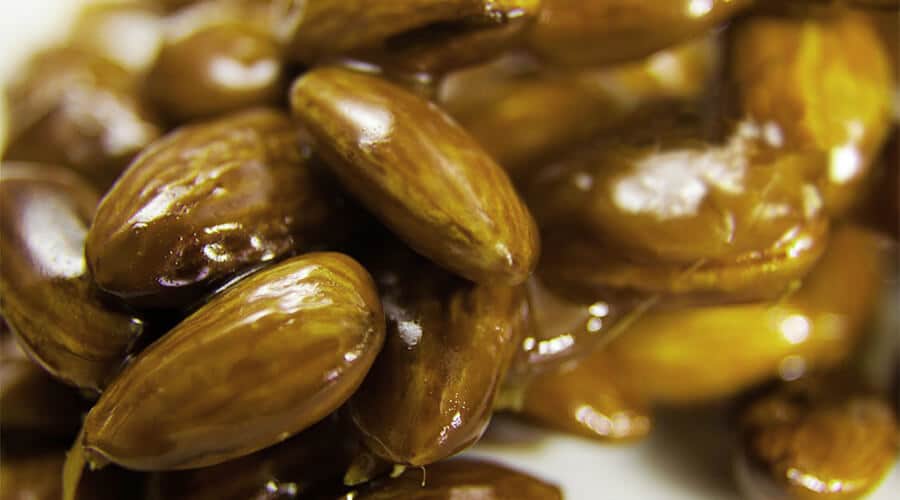
Badam Sookhteh, Shiraz
Badam or Badoom means almonds in Persian, and Sookhteh means burnt. But the dessert, we assure you, is not really burnt!
It is a crunchy treat that we sometimes buy to put on our Haft-Sin table to present to little kids who visit our homes in Nowruz.
This sweet is prepared by tossing almonds into very hot and viscous caramelized sugar.
Haji Badam
Badam, as we said, means almonds. The second part of the nomenclature is not, however, so sensible. Haji means a man that one does not know well. Perhaps a distant uncle who always brought this candy as a gift to children?
Haji Badam are soft, bite-sized cookies traditionally made in Yazd or other towns in the central region of Iran.
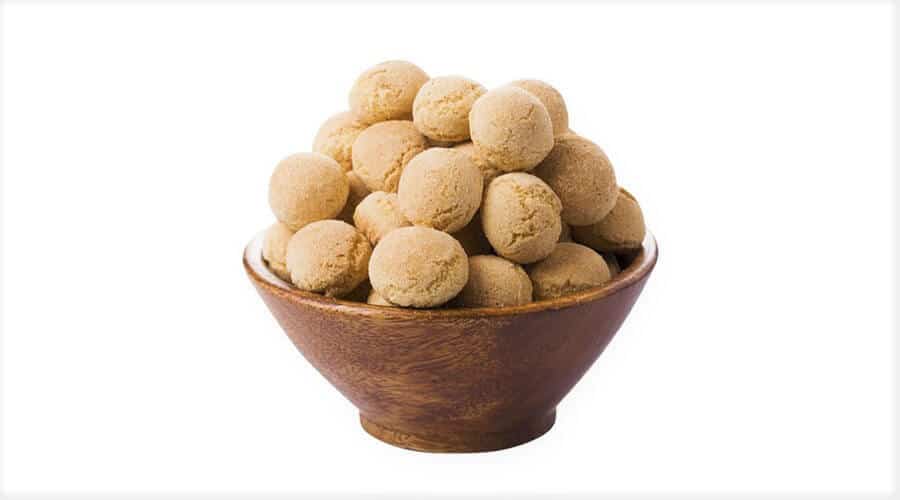
Haji Badam, Yazd
Haji Badam ingredients include saffron, nutmeg, and almonds.
Kolompeh
Kolompeh is a nourishing and filling pastry of Kerman province.
Kolompeh looks like round, soft cookies with a lot of dark, sweet filling inside.
They say that Kolompeh originated in Bam village, in North Khorasan Province. But these days, Kolompeh is widely produced in Kerman city.
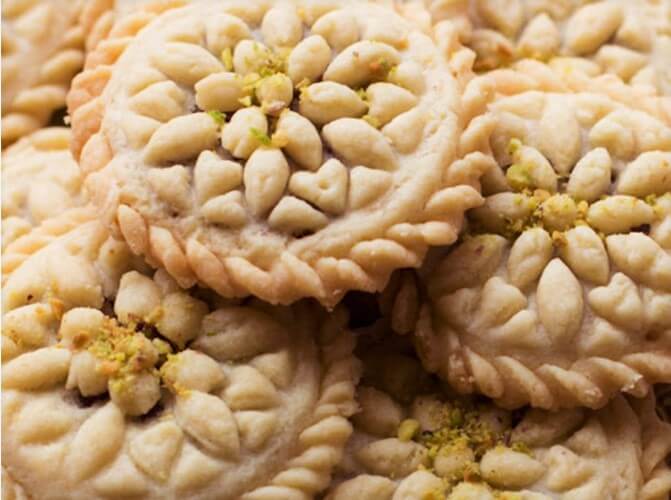
Kolompeh, Kerman
Walnuts, dates, saffron, flour, traditional animal butter, and the spices that Kermanis use in preparing this dessert make for a high-calorie, scrummy treat.
Because of the dates, you may hear it called “Persian Date Pastry” as well.
Leghimat
Leghimat, Legeimat, or Legimat is a sugary dessert of Bushehr and some Arab countries, sometimes called Loqaimat too. These are small fried dough bites sweetened with a lot of sugar sherbert.
Laghimat of Bushehr is made with date syrup, rice flour, and eggs.

Leghimat, Bushehr
People of the south of the country like to prepare and eat this dessert during the month of Ramadan.
Sohan
This sweet looks like an opaque and flat slab of sugary paste that is hardened and decorated with colorful nuts.
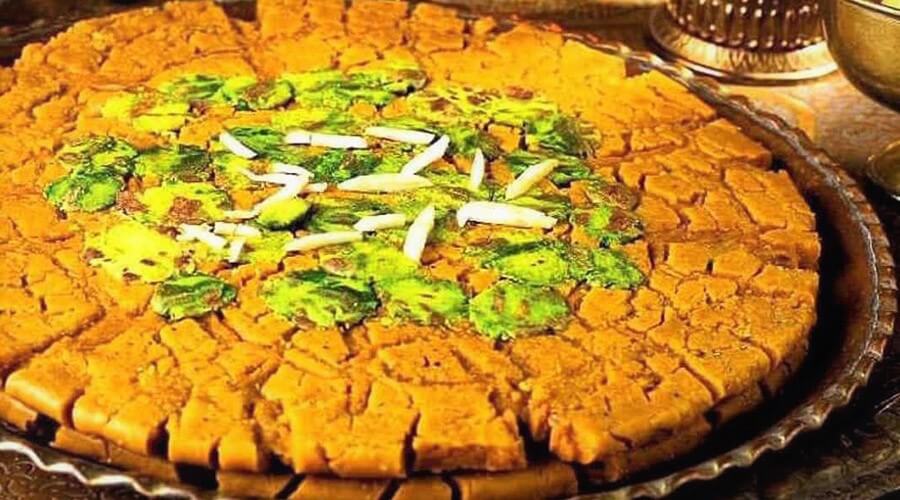
Sohan, Qom
Sohan is a type of brittle (hardened sugar) prepared with saffron, Golab (rosewater), and pistachios that originated in Qom, in the Qajar Era. Sohan is a delicious candy and a lovely gift or souvenir. A small piece of it with tea in the afternoon is energizing and favorable.
Reshteh Khoshkar
Resht-e Khoshkar belongs to the northern regions of Iran. It looks like a small sandwich of thin dough with a sweet filling.
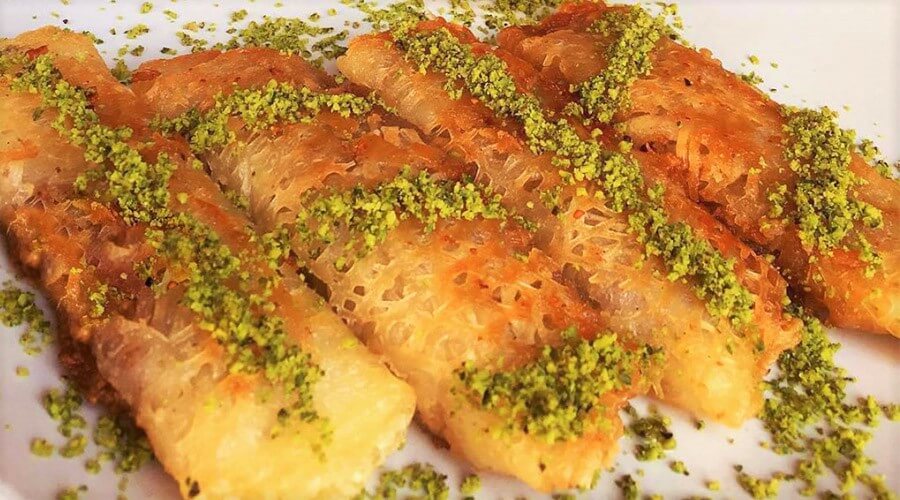
Reshteh Khoshkar, Gilan
Resht-e Khoshkar belongs to the Province of Gilan, Rasht, just below the Caspian Sea in the north of the country.
To make it, Gilani’s make a flat, very thin layer of net-like bread, they fill it with ingredients such as sugar, nutmeg, and walnuts, and then they fry the whole sandwich until it is golden brown in color.
Resht-e Khoshkar is difficult to make and requires a lot of practice and skill, so to have it, you must travel to its place of origin.
Loz
Read as Loaz, and sometimes spelled as Lovuez, this is a delicious candy originating in the city of Tabriz, in East Azerbaijan Province, in the northwest region of Iran.
Loz is a versatile sweet that we cut in the shape of a rhombus or diamond.
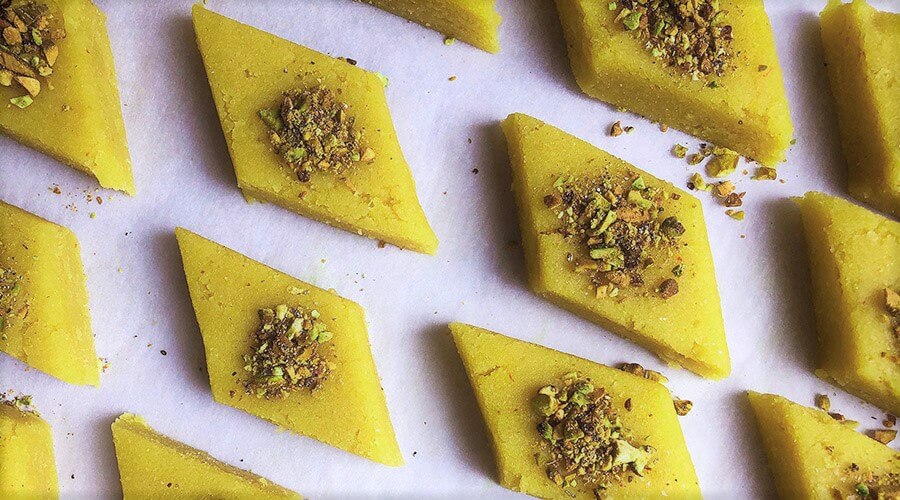
Loz, Tabriz
To make Loz, the Tabrizi people make a light caramel syrup that they flavor with lots of saffron, cardamom, or top-notch Golab.
Then they add a carefully mixed paste of walnuts, or pistachios, coconut flakes, or almonds. After fully incorporating the paste in, they allow it to cool, cut it, and decorate it.
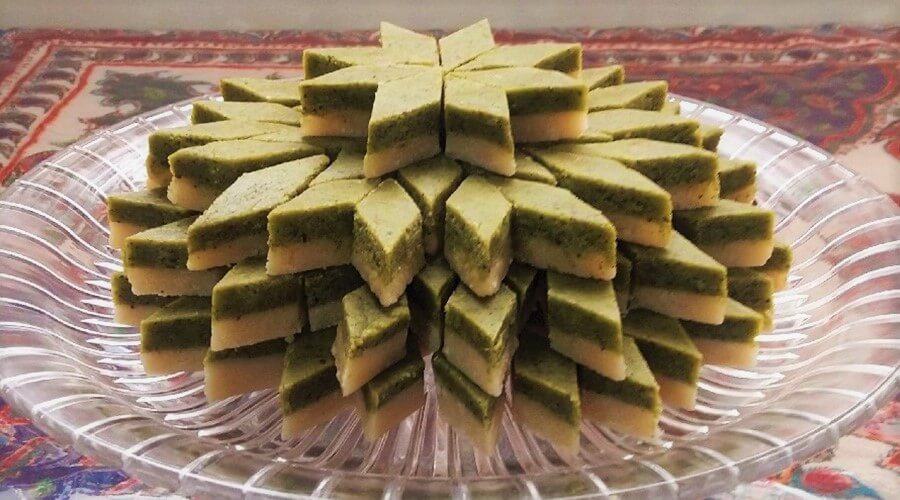
Two Layered Loz, Tabriz
Gaz
Gaz is best described as a type of nougat. You may also hear it be called Persian Nougat.
Gaz is a cubic, white-colored candy that is sometimes covered in flour and filled with pistachios. When you bite into it, it is extremely chewy, sweet, and rich.

Gaz, Isfahan
Reportedly, the people of Isfahan Province have popularly made Gaz since the Safavid Era. Based on another account, the production of Gaz dates back to the Qajar Era, the kings of the time known to bring Gaz with them to the neighboring lands they visited as offerings and gifts.
As for the ingredients of Gaz, first-rate Golab (rosewater), glucose syrup, egg whites, and a little flour, make up the creamy white nougat, and excellent, indigenous nuts and seeds comprise the inside component.
Since Gaz has a long shelf life and can be conveniently packaged and sold, we like to buy them for each other as gifts and tourists like to buy them as souvenirs.
Here ends the list of our favorite Iranian desserts. There were, of course, many more than any tourist surely needs to taste and try. Here are our honorable mentions: Yazd baklava, Rosary chocolates of Tabriz, Poolaki of Isfahan, and Ranginak of Khorasan.


